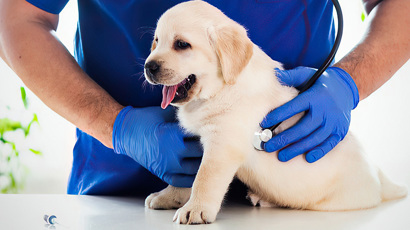How To Leash Train your Dog

Simon Goodall has a few practical suggestions to help make sure the morning walk with your dog is an enjoyable experience all round.
For many of us, one of the pleasures of dog ownership is the daily walking ritual – a time to enjoy fresh air, some easy exercise and complete peace.Often, however, the reality doesn’t measure up – the dog seems to have a mind of its own when it comes to walking on the lead, and your usually calm and placid pet turns into a sled dog with ambitions to join the masses.
So, how do we correct this behaviour?
Smell the roses
First of all, make sure your plan is to take the dog for a pleasant walk, rather than for exercise. I like to get people to visualise going to the movies, but only seeing, rather than hearing, the sound track.
This is how many dogs are walked; their owners pull them along and expect them to enjoy themselves. The dog’s main sense is smell, so on a walk – rather than when you’re out for serious exercise – encourage the dog go along slightly ahead of you and let it have a sniff. This does two things – it allows its mind to operate at a higher rate and thus become a little more exhausted and, secondly, it prevents your dog from becoming territorial-aggressive. This is because the main calming cue for a dog is sniffing.
Encourage the dog go along slightly ahead of you and let it have a sniff.
Make the lead work for you
Don’t expect your dog to immediately understand that you want it to walk nicely. To show a dog the behaviour we want, we like to do something we have termed the “table tennis hand”. Quite simply, when the dog starts to pull very slightly, we give it a verbal cue, such as “easy”, and then give two quick tugs on the lead. We don’t pull the dog back, we don’t yell and scream, and we don’t put on too much pressure. It is merely a warning cue to let the dog know you want him to stop pulling. If you haven’t tried this, give it a whirl; we find this method has about a 98% success rate when it’s applied correctly.
Walking on the Leash
The next thing to remember is that, for the first five minutes of the walk, your dog will be excited. Do the easy walk and if you find you are getting stressed, just turn round and head back home.
All these ideas work much better when you are in a relaxed state of mind, and after a walk that both you and the dog have enjoyed, you’re more likely to get home and find he feels he has been well entertained and is happy to hop onto his bed or blanket and sit quietly.
Simon Goodall: Simon holds a Bachelor of Science in Zoology and Psychology, specialising in canine behaviour.


